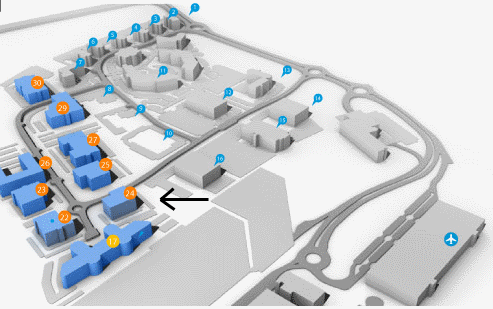Current Size: 100%

- Publications
- Cancer atlases
- 1. Introduction
NCR books
- Cancer Atlas
- Acknowledgements
- Foreword
- Summary
- 1. Introduction
- 2. Methods
- 3. Non-melanoma skin cancer
- 4. Breast cancer
- 5. Colorectal cancer
- 6. Lung cancer
- 7. Prostate cancer
- 8. Non-Hodgkin's lymphoma
- 9. Stomach cancer
- 10. Melanoma of the skin
- 11. Bladder cancer
- 12. Head and neck cancer
- 13. Leukaemia
- 14. Pancreatic cancer
- 15. Kidney cancer
- 16. Oesophageal cancer
- 17. Ovarian cancer
- 18. Brain and other central nervous system cancer
- 19. Cancer of the corpus uteri
- 20. Cancer of cervix uteri
- 21. Discussion
- 22. Conclusions and recommendations
- Appendix 1: Relative risks (with 95% confidence intervals) by area characteristic, cancer site and sex
- Appendix 2: Electoral division tables
- Appendix 3: Summary statistics for each cancer site
- Appendix 4: Regions referred to in the atlas
- References
- Index of figures, maps and tables
1. Introduction
The cancer registries in Northern Ireland and the Republic of Ireland became operational almost simultaneously in 1993-1994, and quickly built up a strong collaborative relationship. The collaboration has been manifest in three all-Ireland cancer incidence reports, numerous joint peer-reviewed publications, several joint research projects and extensive informal exchanges of information, expertise and support. This relationship was recognised at the establishment of the NCI-Ireland-Northern Ireland Cancer Consortium by the creation of a Cancer Registries Group, later to become the Cancer Registries and Epidemiology Group. Both registries realise that, on a small island, there is much potential in working together and in sharing our links with the UK and the rest of Europe.
This atlas is the latest fruit of our collaboration. Building on earlier work which produced an atlas of cancer in the Republic of Ireland, this document has been produced by a team of statisticians, epidemiologists and GIS specialists on both sides of the border. Carrying out the analysis has posed some challenges because of the different nature of the small geographical areas available for analysis and the incompatibility of almost all census measures of socio-economic status between the two countries. However, despite these limitations, this atlas gives, for the first time, an overview of the distribution of cancer risk across the island of Ireland.
Aims
The aims of this atlas were:
- to describe, through mapping and statistical analysis, geographical variation in cancer risk at small area level (electoral division and ward) across the island of Ireland;
- to describe socio-economic and demographic effects on cancer risk;
- to attempt to relate the variations found to the distribution of known cancer risk factors and other determinants of health;
- to make recommendations based on our findings.
Background
Geographical variation in cancer risk has been a subject of fruitful research since cancer registration began in the 1940s. Although often posing questions rather than providing answers, inspection of geographical patterns and their variation between cancer types and over time can give valuable indications of the likely cancer risks and their distribution in our populations. Sometimes, too, examination of this variation can lead to the discovery of new aetiological agents. Within a relatively homogeneous population such as Ireland’s, genetic variation is an unlikely reason for geographical differences in cancer risk, and most must be attributed to modifiable factors of some sort. The majority of variation in modifiable cancer burden is known to be due to four “lifestyle” factors—tobacco, diet, alcohol and sexual/reproductive life (Doll and Peto, 1981). Much less of the risk appears to be attributable to what are commonly called “environmental” factors—radiation exposure, carcinogens in water, air and food, and other external causes. In explaining the variations seen, we therefore need to look closely at people as well as places, and in this atlas we have provided analyses of the personal characteristics, insofar as we could measure them, of people living in low- and high-risk areas.
What this atlas contains
This atlas describes the geographical distribution of the 18 commonest cancers in two ways—through statistical analysis of the variation of cancer risk by characteristics of small areas of residence (electoral division in the Republic of Ireland and ward in Northern Ireland) and in smoothed maps of relative risk for the small geographical units. Each cancer has been assigned a separate chapter, which gives a general summary of the incidence data for the cancer, international comparative incidence rate, risk factors, analysis by small area characteristics and smoothed maps of relative risk. The chapters are ordered by the frequency of occurrence of the cancers—most frequent first.
The statistical analyses describe models of cancer risk at small area level based on the socio-demographic characteristics of the areas—unemployment, education, rurality etc. Implicit in the models is the hypothesis that the characteristics of the small areas are related in some way to those of the individuals living in them. We have explored the strengths and limitations of this approach (Cook et al., 2000) in the previous atlas of the Republic of Ireland (Carsin et al, 2009).
Mapping of cancer risk at small area level, particularly when smoothing techniques are used, as they are in this atlas, is based on the assumption that populations living in adjacent areas are likely to share the same risk factors, and therefore have similar underlying risks of cancer. This hypothesis suggests that most of the variation in cancer incidence between small areas is due to random variation and that by smoothing this variation over larger areas we can arrive at a better estimate of true cancer risk. However, while maps may give a valuable overview of cancer distribution, in one respect they may be deceptive. The majority of the Irish population, north and south, is urban, and living in a few cities of relatively small area, which are inconspicuous on the maps. On the other hand, large areas of the country, particularly in the west and north-west, are sparsely populated but very visible on the map. As a result, the appearance of the maps tends to be dominated by risk in the rural population, while the analyses by socio-economic and demographic area characteristics mainly represent the urban population. The two approaches are complementary.
We hope that this atlas is a beginning, rather than just an end in itself, and that the many questions raised by our analyses will stimulate studies which can make a real impact on understanding, and ultimately reducing, cancer risk in Ireland.
Building 6800
Cork Airport Business Park
Kinsale Road, Cork T12 CDF7
Email Contact us here
Tel: +353 (0) 21 4318014
Fax: +353 (0) 21 4318016




